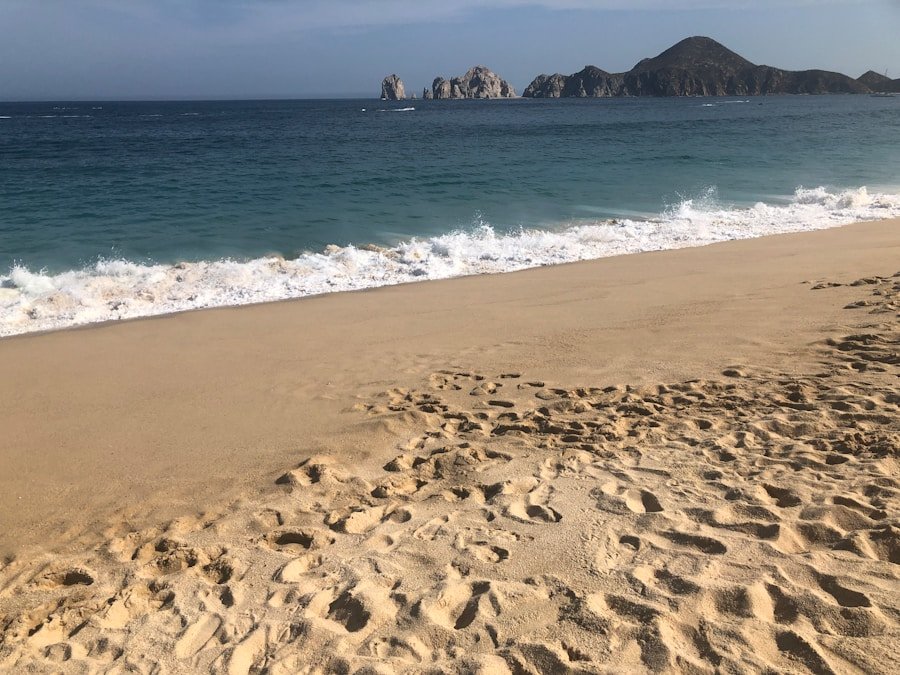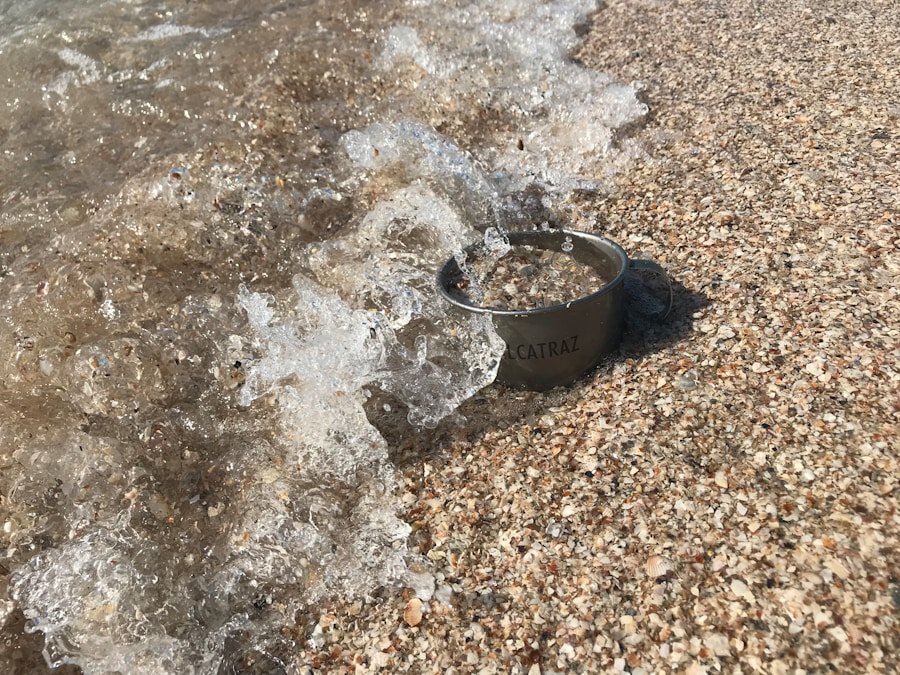When we think about our experiences in the water, the temperature often plays a crucial role in shaping our enjoyment and comfort. Water temperature can influence not only our willingness to dive in but also the types of activities we can engage in. For instance, warmer waters tend to invite us to swim, snorkel, or simply relax by the shore, while cooler temperatures might deter us from spending extended periods in the ocean.
Understanding the importance of water temperature allows us to make informed decisions about our aquatic adventures, ensuring that we maximize our enjoyment while minimizing discomfort. Moreover, water temperature can significantly impact our health and safety. Cold water can lead to hypothermia if we are not adequately prepared, while excessively warm water can cause overheating or dehydration.
By being aware of the temperature ranges that are comfortable for us, we can better plan our activities and ensure that we have the right gear and hydration strategies in place. This awareness not only enhances our experience but also promotes a safer environment for everyone enjoying the water.
Key Takeaways
- Water temperature is important for various water activities and can affect marine life
- Snorkeling and diving are best enjoyed in water temperatures between 70-80°F
- Water temperature affects the behavior and distribution of marine life
- Surfing and stand-up paddleboarding are influenced by water temperature and weather conditions
- Choose water activities based on the temperature and time of year for the best experience
Best Activities to Enjoy in Cabo
Cabo San Lucas is a paradise for water enthusiasts, offering a plethora of activities that cater to all preferences and skill levels. From snorkeling in vibrant coral reefs to deep-sea fishing in the Pacific Ocean, there is something for everyone. One of our favorite activities is whale watching, especially during the migration season when these majestic creatures grace the waters off Cabo’s coast.
The thrill of witnessing humpback whales breaching and playing is an unforgettable experience that connects us with nature in a profound way. In addition to whale watching, we can also indulge in kayaking along the stunning coastline.
For those seeking a more adrenaline-pumping experience, jet skiing offers an exhilarating way to navigate the waves. Whether we prefer a leisurely day on the water or an action-packed adventure, Cabo provides endless opportunities for fun and exploration.
The Ideal Water Temperature for Snorkeling and Diving

When it comes to snorkeling and diving, water temperature is a critical factor that can enhance or detract from our experience. Ideally, we seek water temperatures between 75°F and 85°F (24°C to 29°C) for optimal comfort while exploring underwater ecosystems. In these temperatures, we can comfortably wear lighter wetsuits or even just swimsuits, allowing for greater freedom of movement as we navigate through schools of colorful fish and intricate coral formations.
Cabo’s waters typically fall within this ideal range during the summer months, making it an excellent time for underwater exploration. However, as temperatures fluctuate throughout the year, we must be mindful of seasonal changes. In cooler months, we may need thicker wetsuits to maintain body heat while diving or snorkeling.
Understanding these temperature variations helps us prepare adequately and ensures that we can fully enjoy the breathtaking marine life that Cabo has to offer.
How Water Temperature Affects Marine Life
| Water Temperature (°C) | Effect on Marine Life |
|---|---|
| Below 0 | Ice formation can damage marine organisms and disrupt their habitats |
| 0-10 | Marine life may slow down due to cold temperatures |
| 10-20 | Ideal temperature range for most marine organisms to thrive |
| 20-30 | Increased metabolic rates and reproduction in marine life |
| Above 30 | Stress on marine organisms, coral bleaching, and potential mass mortality events |
Water temperature plays a pivotal role in shaping marine ecosystems and influencing the behavior of marine life. Many species are sensitive to temperature changes, which can affect their feeding patterns, breeding cycles, and migration routes. For instance, warmer waters may lead to increased plankton blooms, attracting larger fish and marine mammals that rely on these organisms for sustenance.
Conversely, cooler temperatures can drive certain species to deeper waters or even lead them to migrate to warmer regions. As we engage in activities like snorkeling or diving, we may notice how different species thrive in varying temperatures. Coral reefs, for example, are particularly sensitive to temperature fluctuations; prolonged exposure to elevated temperatures can lead to coral bleaching, which negatively impacts entire ecosystems.
By understanding how water temperature affects marine life, we can become more conscientious participants in preserving these delicate environments while enjoying our aquatic adventures.
The Impact of Water Temperature on Surfing and Stand-Up Paddleboarding
For surfers and stand-up paddleboarders, water temperature is just as significant as wave conditions. Ideal surfing temperatures generally range from 65°F to 75°F (18°C to 24°C), where we can comfortably ride the waves without feeling too cold or overheated. In Cabo, we often find ourselves enjoying these perfect conditions during the late spring and summer months when the ocean warms up and swells create ideal surfing opportunities.
However, as temperatures drop during the fall and winter months, we may need to adjust our gear accordingly. A thicker wetsuit becomes essential for maintaining warmth while paddling out into cooler waters. Additionally, understanding how water temperature affects wave behavior can enhance our surfing experience; warmer waters often lead to more consistent swells and better surf conditions.
By being mindful of these factors, we can ensure that our time on the water is both enjoyable and safe.
Tips for Choosing the Right Water Activities Based on Temperature

Choosing the right water activities based on temperature requires careful consideration of both personal comfort and safety. First and foremost, we should always check local weather forecasts and ocean conditions before heading out. This information will help us gauge whether the water temperature is suitable for our planned activities.
If we find ourselves in cooler waters, layering with appropriate wetsuits or rash guards can make a significant difference in comfort levels. Additionally, it’s essential to listen to our bodies and recognize when conditions may be too extreme for our liking. If we feel chilly or overheated while engaging in an activity, it’s wise to take breaks or switch to a more suitable option.
For instance, if snorkeling becomes uncomfortable due to cooler temperatures, we might opt for a beach day instead or explore other activities like beach volleyball or relaxing under an umbrella with a good book.
Finding the Best Time to Visit Cabo for Your Preferred Water Activities
Timing our visit to Cabo can greatly enhance our experience based on our preferred water activities. For those who enjoy snorkeling and diving, planning a trip between late spring and early fall is ideal when water temperatures are at their warmest and marine life is abundant. This period also coincides with calmer seas, making it easier for us to explore underwater wonders without worrying about rough waves.
On the other hand, if surfing is our primary focus, visiting during the fall months may yield better wave conditions as swells begin to pick up. Each season offers unique opportunities for different activities; therefore, understanding what we want to do will help us choose the best time for our visit. By aligning our travel plans with optimal conditions for our favorite water activities, we can ensure a memorable experience in Cabo.
Ensuring Safety and Comfort in Different Water Temperatures
Safety and comfort should always be at the forefront of our minds when engaging in water activities across varying temperatures. To ensure a safe experience, we should familiarize ourselves with signs of hypothermia or heat exhaustion. If we start feeling excessively cold or overheated while swimming or participating in other activities, it’s crucial to take immediate action—whether that means getting out of the water or finding shade.
Additionally, staying hydrated is vital regardless of water temperature. Even in cooler waters, we may not realize how much fluid we lose through exertion in the sun. Carrying a reusable water bottle with us ensures that we remain hydrated throughout our adventures.
By prioritizing safety measures and being mindful of our comfort levels in different water temperatures, we can fully enjoy all that Cabo has to offer while creating lasting memories in this beautiful coastal paradise.
If you’re interested in learning more about the water temperature in Cabo, you may want to check out this article on cabo-adventures.net. This article provides valuable information on the best times to visit Cabo for optimal water temperatures and ideal conditions for water activities. It’s a great resource for anyone planning a trip to this beautiful destination.
FAQs
What is the average water temperature in Cabo?
The average water temperature in Cabo San Lucas ranges from 70°F (21°C) in the winter to 85°F (29°C) in the summer.
When is the best time to visit Cabo for warm water temperatures?
The best time to visit Cabo for warm water temperatures is during the summer months, from June to September, when the water temperature is around 85°F (29°C).
What activities can I enjoy in Cabo based on the water temperature?
With warm water temperatures, visitors to Cabo can enjoy a variety of water activities such as swimming, snorkeling, scuba diving, and fishing.
How does the water temperature in Cabo affect marine life?
The warm water temperatures in Cabo support a diverse range of marine life, including tropical fish, sea turtles, and even the occasional whale shark.
Are there any factors that can affect the water temperature in Cabo?
The water temperature in Cabo can be influenced by factors such as ocean currents, weather patterns, and seasonal changes.



